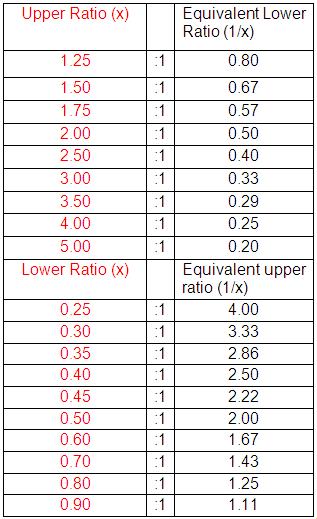
Extension D: Equivalence between ORs <1 and ORs >1
|
The way odds ratios (ORs) are expressed depends on the baseline or comparison category. For
example,
consider the association of gender with aspiration to continue in full-time education after the age of 16, the example we described on Page 4.2 (a) the equivalent OR <1 given a particular OR>1, and (b) the equivalent OR >1 given a particular OR<1.
Figure D1: Equivalent Odds Ratios
|










